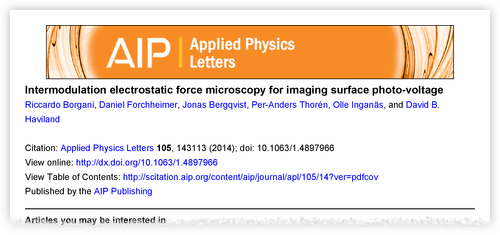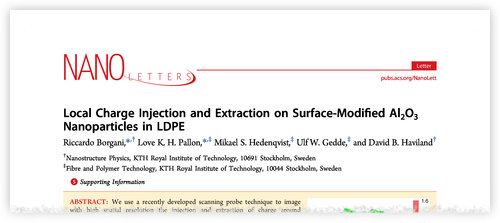Intermodulation Electrostatic Force Microscopy (ImEFM)
ImEFM is more sensitive than standard Kelvin Probe Force Microscopy (KPFM). ImEFM uses resonance to enhance sensitivity, and it works very close to the surface without lift-mode, thereby giving higher resolution. You can scan faster than standard KPFM with the same signal-to-noise ratio. ImEFM works without voltage feedback so you are free to apply an arbitrary DC voltage to the tip and study how the electrostatic force responds to this 'gating' potential.
ImEFM in publications


